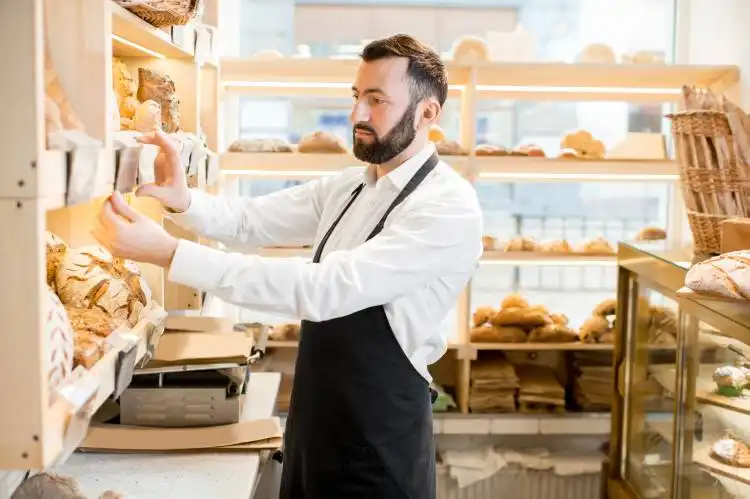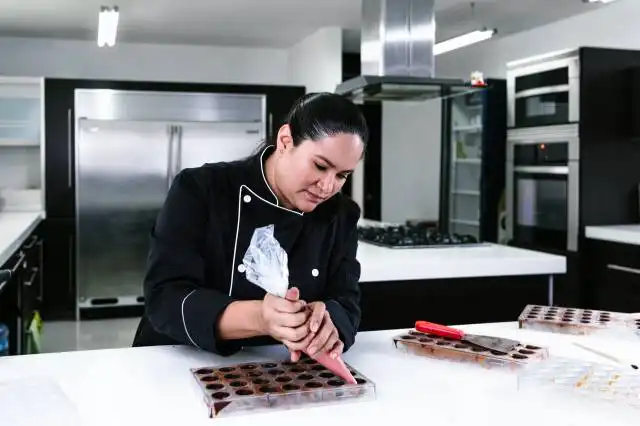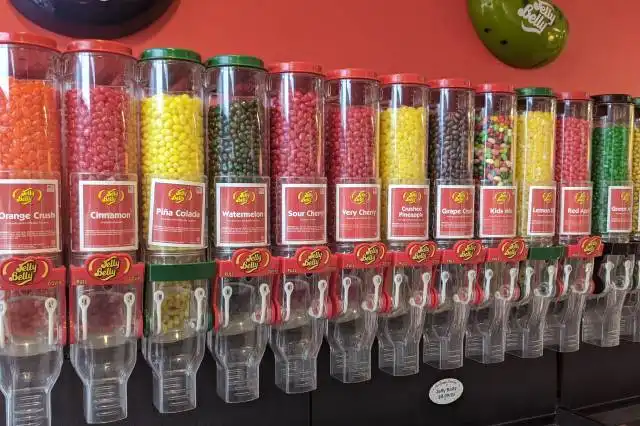Start a Cake Business
Baking Dreams into Reality: Your Edible Art Venture
| Updated


CAKE BUSINESS
Baking your way to success might just be a piece of cake! Explore a delightful cake business venture, where your kitchen becomes your canvas and scrumptious cakes your masterpiece. This type of business will essentially revolve around creating custom cakes for various events like birthdays, weddings, and parties - turning sugar, flour, and creative vision into edible art. Remember, every celebration needs a cake, and your business could be the one to provide the icing on their memorable day!
Jump to Business Plan
RELATED BUSINESS IDEAS
Browse ALL Food & Beverage Entrepreneurship Business Ideas
Discover Your Perfect Domain
Unlock the door to your online success with our hand-picked selection of premium domain names. Whether you're starting a new venture or rebranding an existing one, the right domain can set the tone for your digital presence. Browse through our curated list, each with its unique potential to enhance your brand's visibility and credibility.
CAKE MINI BUSINESS PLAN
This a quick reality check to help you identify the strengths and weaknesses of your business concept before you dive in.
Expected Percent Margins:
Brushing crumbs from our baking apron, we look at profit margins:
- Gross Margin: 70-80% (Cakes have a high markup as raw material costs are pretty low)
- Net Profit Margin: 20-30% (Consider costs like rent, utilities, marketing, etc.)
Earnings Expectations:
Whipping out the monetary recipes could potentially yield:
- Daily Earnings: $100 - $400 (Depending upon the number and type of cakes sold)
- Weekly Earnings: $700 - $2,800
- Monthly Earnings: $3,000 - $12,000
- Annual Earnings: $36,000 - $144,000
Actions to Achieve the Sweet Success:
Raw Material Procurement:
- Initial Investment: Sprinkle around $10,000 - $20,000 for a startup bakery.
- Supplier Relations: Formulate sweet relationships with reliable and quality suppliers.
Marketing Whisk:
- Social Media: Dress your cakes with adorable pictures and post them 3-4 times a week on various platforms.
- Local Advertising: Stir in at least $300 - $500 monthly for local advertisement through leaflets, local newspapers, etc.
Sales and Customer Experience:
- Staffing: Bake better with 1-2 part-time staff trained in cake art and bakery.
- Tasty Up-Selling: Serve the customers with complimentary products like coffee, tea, cold beverages, etc.
Expense Control:
- Rent: Hunt for a location where the rent is less than 10% of your expected monthly earnings.
- Utilities and Maintenance: Mix a budget of around $200-$400 per every month.
Operational Actions:
- Open Hours: Oven on for at least 8 hours a day, six days a week.
- Transaction Volume: Target for around 10-30 transactions per day with an array of products like cookies, cupcakes, and whole cakes.
Remember, these figures can vary significantly based on location, competition, and business expertise. Always discuss with a financial advisor or a seasoned entrepreneur before turning on the oven! It's a piece of cake!
NOT WHAT YOU HAD IN MIND? Here are more ideas



Browse ALL Food & Beverage Entrepreneurship Business Ideas
Grab Your Business Website Name
Before you get caught up in the whirlwind of setting up your business, invest in a domain name. It's a small but significant step that lays the foundation for your brand and makes it easier for customers to find and trust you. Just like you wouldn't build a house without securing the land first, don't build a business without securing your domain name.
"Why? Can't that wait?" Here's why it shouldn't
Step 1: Determining if a Cake Business is Right for You
Before starting a cake business, it is important to determine if it is the right endeavor for you. This includes understanding the startup and ongoing expenses associated with running a cake business. It is important to understand the costs associated with the business, such as ingredients, equipment, and marketing. Additionally, it is important to consider the ongoing costs associated with running a cake business, such as rent, utilities, and insurance.
Breakdown of Startup Expenses
When starting a cake business, it is important to understand the startup expenses associated with the business. This includes the cost of ingredients, such as flour, sugar, and butter. Additionally, it is important to consider the cost of equipment, such as mixers, ovens, and cake pans. It is also important to consider the cost of marketing, such as website design, advertising, and promotional materials.
Breakdown of Ongoing Expenses
When running a cake business, it is important to understand the ongoing expenses associated with the business. This includes the cost of rent, utilities, and insurance. Additionally, it is important to consider the cost of ingredients, such as flour, sugar, and butter. It is also important to consider the cost of equipment, such as mixers, ovens, and cake pans.
Examples of Ways to Make Money
When running a cake business, it is important to understand the various ways to make money. This includes selling cakes directly to customers, selling cakes at farmers markets, and selling cakes to local businesses. Additionally, it is important to consider selling cake decorating supplies, such as icing, fondant, and cake toppers. It is also important to consider offering cake decorating classes, which can be a great way to generate additional income.
Step 2: Naming the Business
When it comes to naming a business, it is important to come up with something that is memorable and easy to pronounce. It should also be something that reflects the type of business you are running. For a cake business, consider words that evoke the feeling of sweetness and joy. Additionally, it should be something that is not already trademarked or copyrighted. Consider researching the US Patent and Trademark Office website to make sure the name is not already taken.
When it comes to the actual process of coming up with a name, brainstorming is key. Make a list of words that reflect the type of business you are running and then combine them in different ways. Consider using a thesaurus to find words that have similar meanings. Additionally, consider using a name generator website to help come up with ideas. Once you have a few ideas, consider running them by friends and family to get their opinion.
When you have settled on a name, make sure to register it with the US Patent and Trademark Office. This will help protect your business from any potential legal issues. Additionally, make sure to register the domain name for your business website. This will help customers find you online and will make it easier for them to purchase your products. Finally, make sure to register your business with the local and state governments. This will ensure that you are in compliance with all the necessary regulations.
Step 3: Creating a Business Plan
Creating a business plan is an important step in starting a cake business. A business plan should include the following components:
- Executive Summary: This section should provide an overview of the business, including the mission statement, the products and services offered, and the target market.
- Market Analysis: This section should include a review of the current market conditions, the target market, and the competitive landscape.
- Financial Plan: This section should include a breakdown of startup expenses, ongoing expenses, and potential sources of income.
- Operational Plan: This section should include details about the operations of the business, such as the location, staffing, and equipment.
Writing the Business Plan
Once the components of the business plan have been identified, it is time to write the plan. Writing a business plan can be a daunting task, but there are resources available to help. There are many online templates and software programs that can help guide the process. Additionally, there are professional consultants who specialize in writing business plans. It is important to take the time to create a comprehensive business plan that will serve as a roadmap for the business.
Step 4: Obtaining the Necessary Licenses
The type of licenses needed to start a cake business will depend on the state and local laws. Generally, businesses will need to obtain a business license, a food service license, and a tax permit. Depending on the type of business, additional licenses may be required. For example, if the business will be selling cakes online, a seller’s permit may be needed. It is important to research the specific licenses needed for the business and to obtain them before beginning operations.
Where to Obtain Licenses
Licenses can typically be obtained from the state or local government. For example, a business license can be obtained from the Secretary of State’s office. A food service license can be obtained from the Department of Health. And a tax permit can be obtained from the Department of Revenue. Additionally, the Small Business Administration (SBA) may be able to provide guidance on the types of licenses needed and where to obtain them.
Cost of Licenses
The cost of licenses will vary depending on the type of license and the state or local laws. Generally, business licenses will cost between $50 and $500. Food service licenses will cost between $50 and $200. And tax permits will cost between $50 and $100. It is important to research the cost of the licenses needed for the business and to budget accordingly.
Renewing Licenses
Licenses typically need to be renewed on an annual basis. The cost of renewing licenses will be the same as the cost of obtaining them. Additionally, the business may need to submit additional paperwork to renew the licenses. It is important to research the renewal process for the licenses needed for the business and to plan accordingly.
Step 5: Choosing a Location
When choosing a location for a cake business, there are several factors to consider. First, the location should be accessible to customers and have adequate parking. Second, the location should have enough space to accommodate the necessary equipment, such as ovens, mixers, and refrigerators. Third, the location should have the necessary permits and licenses to operate a business. Finally, the location should be in an area with a high foot traffic, as this will help increase visibility and sales.
Types of Locations
When it comes to choosing a location for a cake business, there are several options. The most common option is to open a storefront in a shopping center or strip mall. This is a great option for businesses that want to have a physical presence and be able to interact with customers. Additionally, some cake businesses may choose to operate out of a commercial kitchen or a shared kitchen space. This is a great option for businesses that want to focus on online sales or delivery services. Finally, some cake businesses may choose to operate out of their own home. This is a great option for businesses that are just starting out and don’t have the funds to rent a storefront or commercial kitchen.
Step 6: Setting Up the Kitchen
When setting up the kitchen for a cake business, there are a few pieces of equipment that are necessary. The most important pieces of equipment are an oven, a mixer, a refrigerator, and a set of baking pans. Additionally, it is important to have a few basic tools such as a spatula, a rolling pin, a set of measuring cups and spoons, and a set of mixing bowls. It is also helpful to have a few decorative tools such as a cake stand, a turntable, and a set of cake decorating tools.
Location
The next step in setting up the kitchen is to determine the location. It is important to find a space that is large enough to accommodate all of the necessary equipment and supplies. Additionally, it is important to find a space that is easily accessible to customers. If the business will be selling cakes online, then it is important to find a space that is close to a shipping facility.
Licensing
Once the kitchen is set up, it is important to obtain the necessary licensing. Depending on the state, this may include a food service license, a health permit, or a business license. Additionally, it is important to make sure that the kitchen meets all of the health and safety regulations.
Insurance
The last step in setting up the kitchen is to obtain the necessary insurance. This may include general liability insurance, product liability insurance, and property insurance. It is important to make sure that the insurance covers all of the necessary aspects of the business.
Step 7: Advertising
When it comes to advertising your cake business, there are a variety of ways to get the word out. Social media is a great way to advertise for free, and you can also create a website or blog to showcase your cakes. You can also consider traditional advertising methods such as print ads, radio spots, and television commercials. Additionally, you can create flyers and distribute them in your local area. Word of mouth is also a great way to advertise, so don’t forget to ask your friends and family to spread the word.
Cost of Advertising
Advertising can be expensive, so it’s important to consider the cost of each method before you commit to it. Social media is free, but creating a website or blog may require a small investment. Traditional advertising methods such as print ads, radio spots, and television commercials can be costly, so it’s important to research the cost of each before you commit. Additionally, you may need to invest in materials such as flyers and business cards.
Measuring the Effectiveness of Advertising
Once you’ve invested in advertising, it’s important to measure the effectiveness of each method. You can track the number of orders you receive from each method and compare it to the cost of the advertising. This will help you determine which methods are working and which ones are not. Additionally, you can ask customers how they heard about your business to get an idea of which methods are working.
Step 8: Pricing
When pricing your cakes, there are a few factors to consider. First, you should consider the cost of ingredients and labor. This includes the cost of the cake itself, the cost of any decorations, and the cost of labor to make the cake. Additionally, you should consider the cost of any packaging or delivery services you may be offering. You should also consider the market rate for cakes in your area. This will help you determine a competitive price that will attract customers.
Setting Prices
Once you have determined the cost of ingredients and labor, you can set your prices. It is important to set prices that are competitive but also reflect the quality of your cakes. You should also consider offering discounts or promotions to attract customers. Additionally, you should consider offering a variety of pricing options, such as a la carte pricing or package deals. This will give customers more options and make them more likely to purchase from you.
Adjusting Prices
Once you have set your prices, you should monitor them regularly to ensure they are still competitive. You should also consider adjusting your prices based on the season or special occasions. This will help you maximize profits and attract more customers. Additionally, you should consider offering discounts or promotions to attract customers.
Sticking to Your Prices
Once you have set your prices, it is important to stick to them. This will help you maintain credibility and ensure that customers know what to expect. Additionally, it will help you avoid any potential legal issues that could arise from undercharging or overcharging customers.
Step 9: Managing the Business
Managing a cake business can be a difficult task. It is important to have a plan in place to ensure that the business is running smoothly. Here are some tips to help manage the business:
Establish a budget. It is important to have a budget in place to ensure that the business is spending money wisely. This budget should include both startup and ongoing expenses.
Create a marketing plan. A marketing plan should include strategies for advertising the business, such as online marketing, print advertising, and word-of-mouth.
Hire employees. If the business is growing, it may be necessary to hire employees to help with the workload. It is important to hire employees who are reliable and have experience in the cake business.
Track inventory. Keeping track of inventory is important to ensure that the business is stocked with the necessary ingredients and supplies.
Keep records. Keeping accurate records of all transactions is important for tax purposes and to ensure that the business is running efficiently.
Stay organized. It is important to stay organized to ensure that the business is running smoothly. This includes keeping track of orders, customer information, and other important documents.
Monitor customer feedback. It is important to monitor customer feedback to ensure that the business is meeting customer needs. This can be done by asking customers for feedback after each transaction or by setting up a survey on the business website.
Stay up to date. It is important to stay up to date on trends in the cake business. This includes researching new recipes, techniques, and ingredients.
Network. Networking with other cake businesses can help the business stay competitive and learn from other successful businesses.
EXPLORE MORE CATEGORIES
Browse ALL Business Idea Categories
TAKE THE NEXT STEPS










